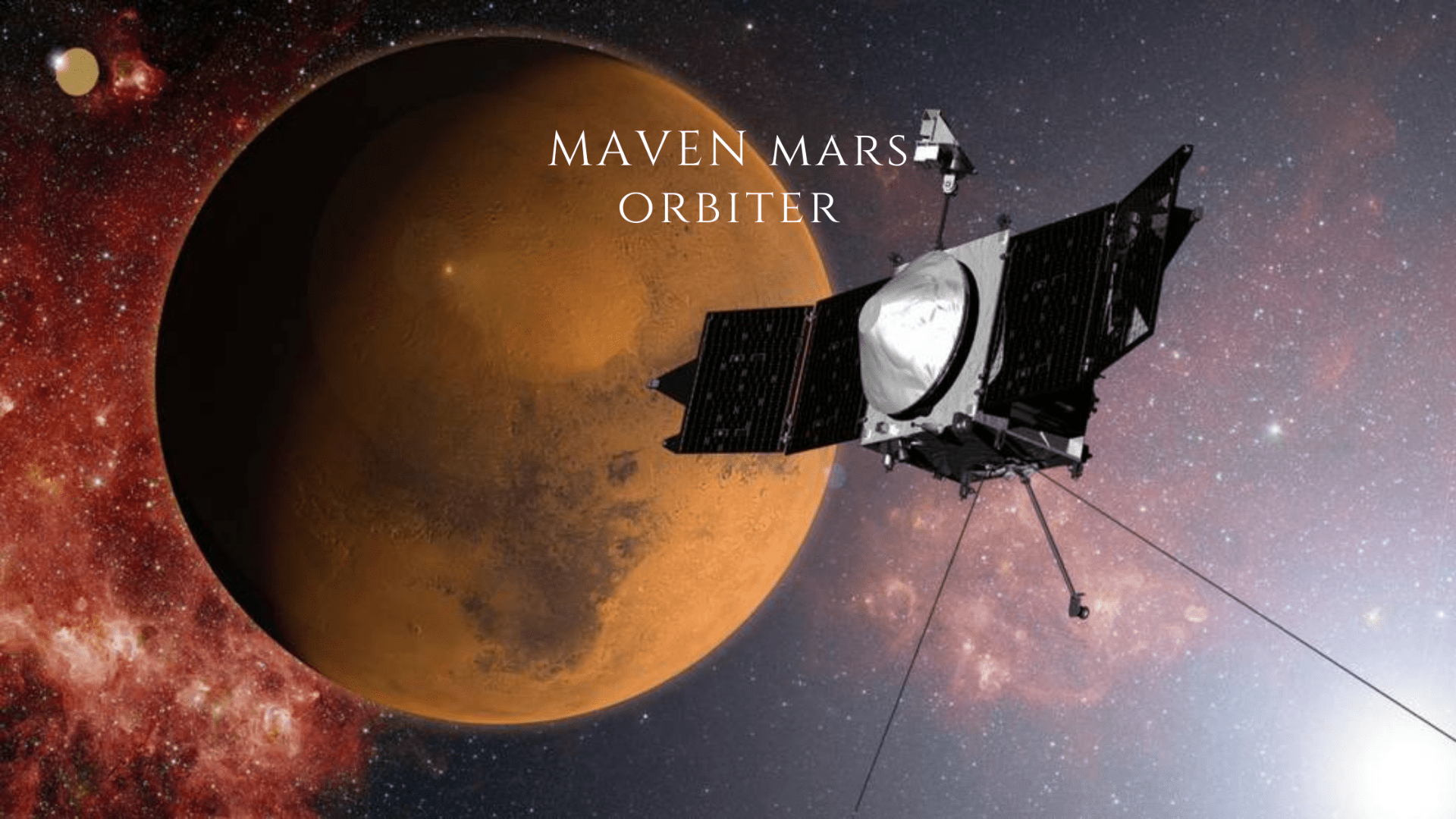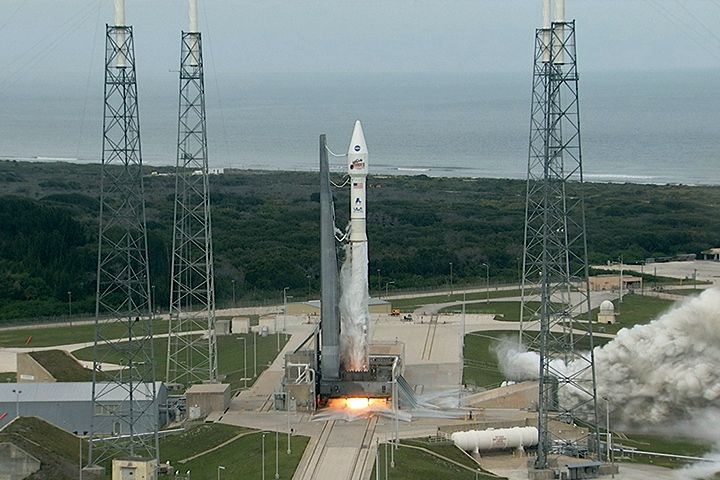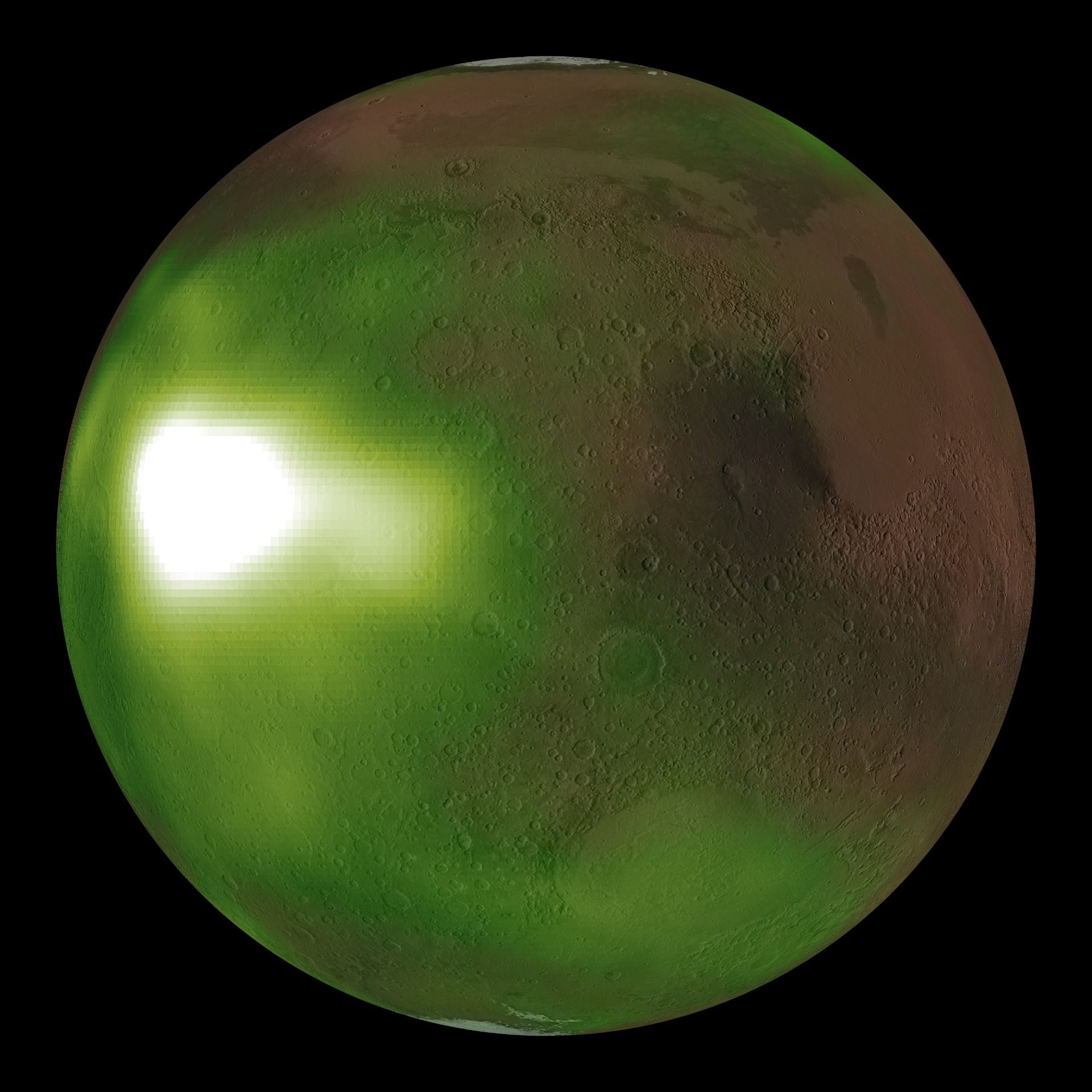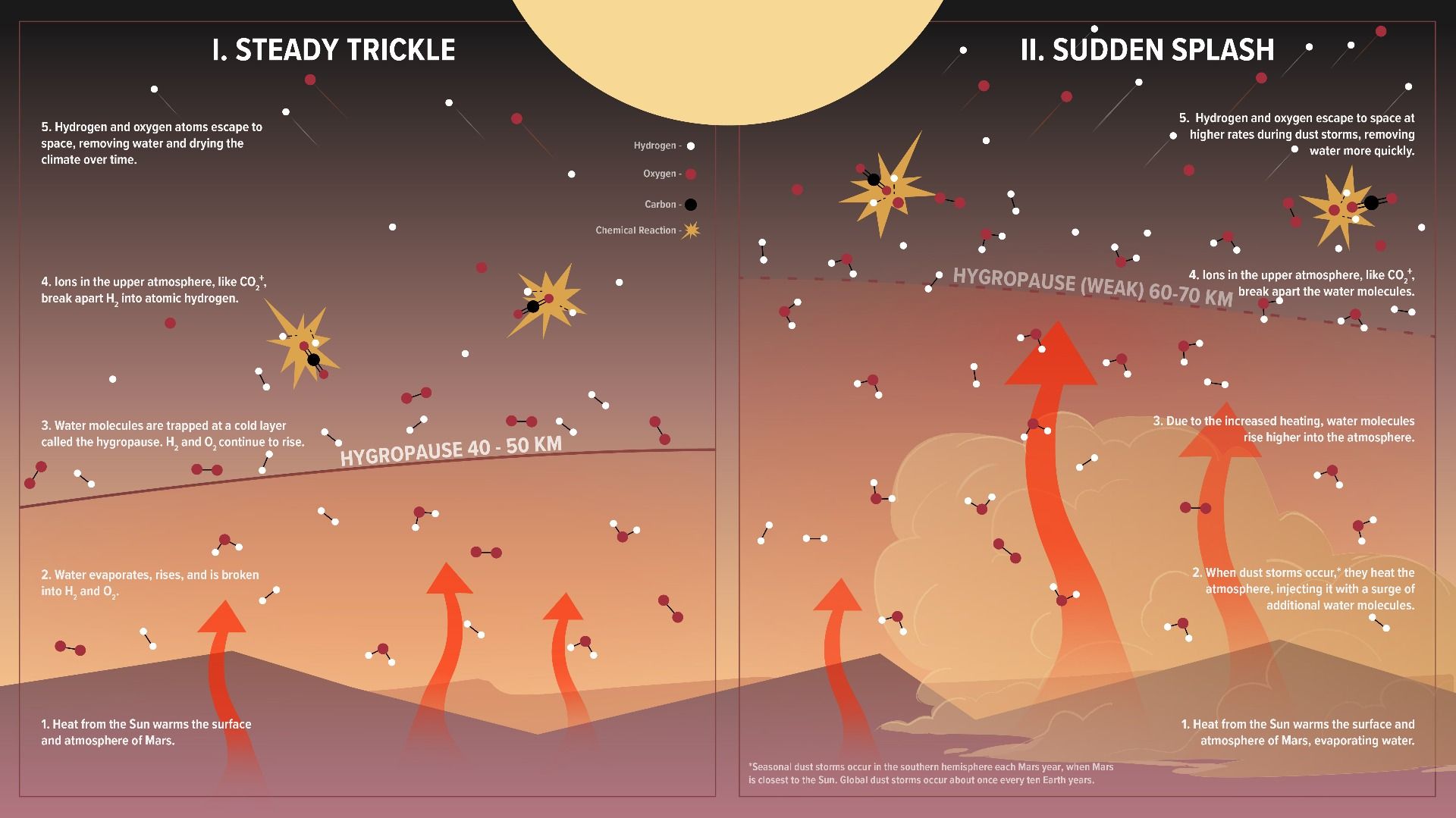
MAVEN Mars Orbiter

MAVEN is an American spacecraft that was launched in 2013 to study the loss of Mars' atmospheric gases to space and provide insight into the planet's climate and water history. MAVEN is the first mission by NASA to study the Martian atmosphere. The probe analyzes Mars' ionosphere and upper atmosphere to examine at what rate and how solar wind is stripping away volatile compounds from the surface.
MAVEN's mission objective is to determine the history of the loss of atmospheric gases to space, which would provide answers about the evolution of Mars' climate. Scientists will be able to infer how the planet's atmosphere evolved by measuring the rate at which the atmosphere is currently escaping to space. The MAVEN mission's primary scientific objectives are to: measure the structure and composition of the ionosphere and upper atmosphere, measure the rate of loss of gas from the top of the atmosphere to space, and determine properties and characteristics that will allow us to extrapolate the loss to space over the four-billion-year history recorded in the geological record.

In November 2014, MAVEN began its primary science mission, which was scheduled to last one year. During that time, MAVEN observed a nearby comet, measured how volatile gases are swept away by the solar wind and performed four "deep dips" down to the border of the upper and lower atmospheres to characterize Mars' entire upper atmosphere more accurately. The science phase was extended in June 2015 another 15 months to September 2016, which allowed MAVEN to observe the atmosphere through the entirety of Mars' seasons. MAVEN completed a full Martian year of scientific observations on October 3, 2016. MAVEN was approved for an additional 2-year extended mission through September 2018, and all spacecraft systems were still operating as expected. In March 2017, MAVEN's investigators performed a previously unscheduled maneuver to avoid colliding with Phobos the following week.

Scientists suspect that Mars lost 99% of its atmosphere over millions of years as the core cooled and its magnetic field decayed. This allowed the solar wind to sweep away most of the water and volatile compounds that the atmosphere once contained. Some features on Mars resemble dry riverbeds on Earth, and the discovery of minerals that form in the presence of water indicates that Mars at one point had flowing liquid water on the surface. This means the surface was warm enough and had an atmosphere dense enough to sustain liquid. However, that thick atmosphere was somehow lost, and MAVEN is helping scientists understand how and why this occurred.
